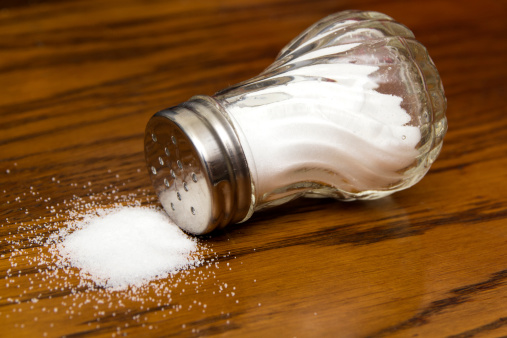The Skinny on Sodium: How Much is in Nutrisystem Foods?
Article posted in: Nutrisystem
Consuming too much sodium is considered a risk factor for a number of health conditions, including high blood pressure (hypertension). Given that high blood pressure is a leading cause of cardiovascular disease—it accounts for two-thirds of all strokes and half of all heart disease cases, it’s no wonder so many people are feeling salty about sodium.
The good news is, while the individual Nutrisystem meals and snacks vary in their sodium content, all of the Nutrisystem programs are designed to align with the USDA’s recommended daily intake of 2,300 mg of sodium or less for the general adult population (Dietary Guidelines for Americans, 2020 – 2025). The actual sodium level may vary based on which weight loss program you choose and which grocery food items you add to your diet plan. Considering that USDA reports indicate that the average American eats about 3,300 mg of sodium a day, Nutrisystem can be a great way to cut salt while you lose weight.
If you would like to reduce your sodium intake on Nutrisystem, please contact your health care provider to determine if an adjusted meal plan is required. Click here for a list of lower sodium foods on the Nutrisystem menu.
Need help shaking your salt habit? Try these seven simple tips:
- Use fresh meats instead of packaged versions. Fresh cuts of beef, chicken or pork contain natural salt, but the content is far less than the extra salt added during processing in products like bacon or ham.
- Swap salt for spices, herbs and salt-free seasonings when preparing foods.
- Opt for fresh vegetables and beans in place of canned versions when shopping for Grocery Additions.
- If you do opt for canned veggies or beans, opt for no- or low-sodium options, and rinse the foods thoroughly to wash off some of the salt.
- When dining out, stay away from foods prepared with added salt (not sure which foods are extra salty? Don’t be afraid to ask your waiter!).
- Prepare program add-ons (like spaghetti sauces or soups) from scratch so you can control the ingredients, or buy options that are no-salt-added or low sodium.
- When purchasing frozen vegetables, choose options that don’t contain added seasoning or sauces.






